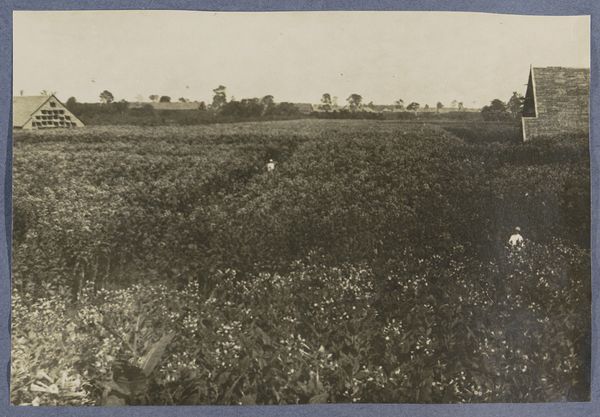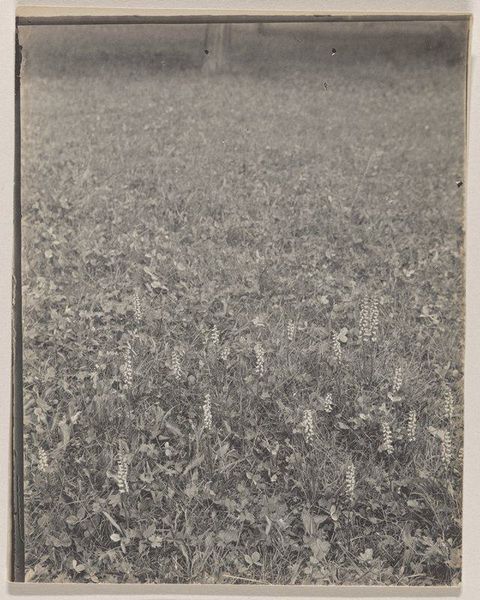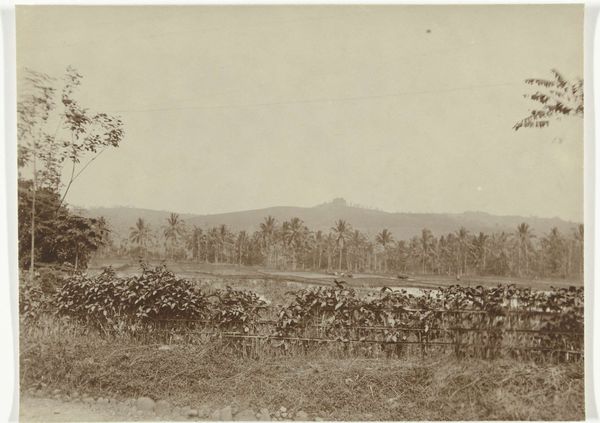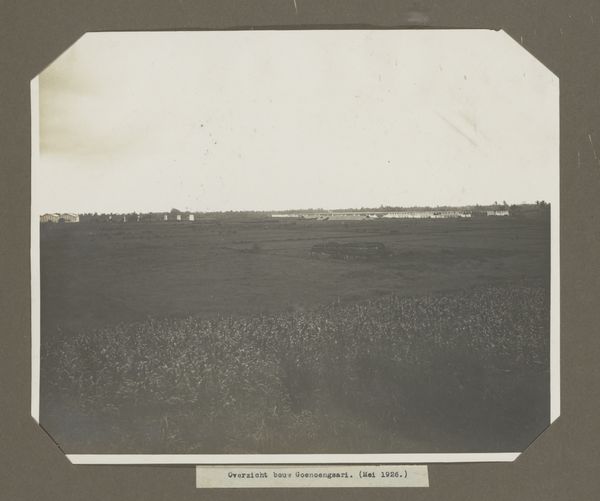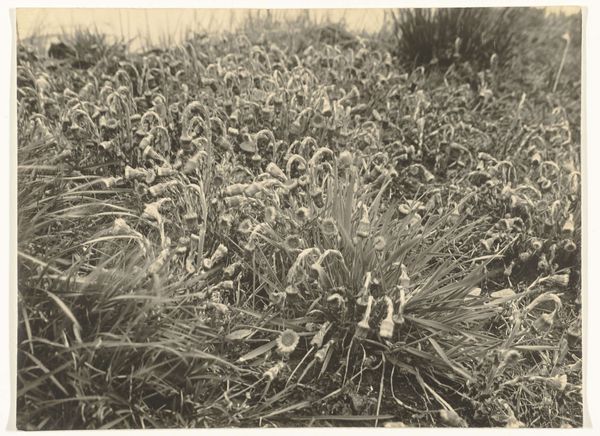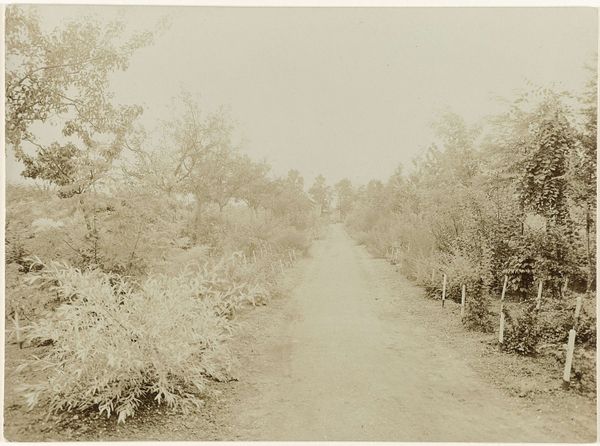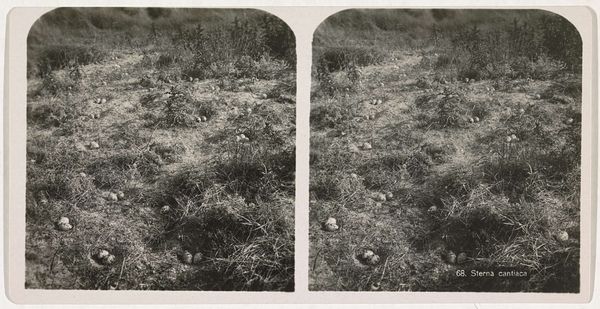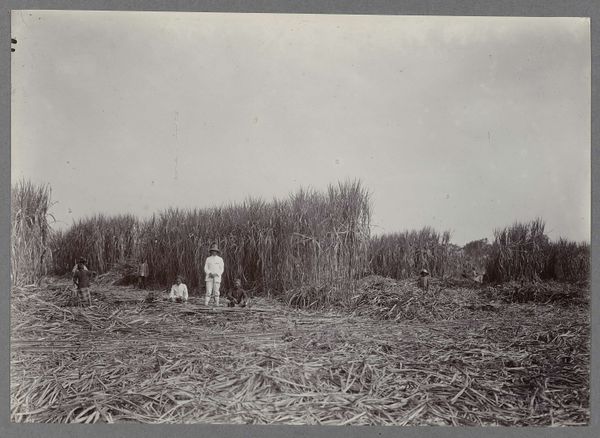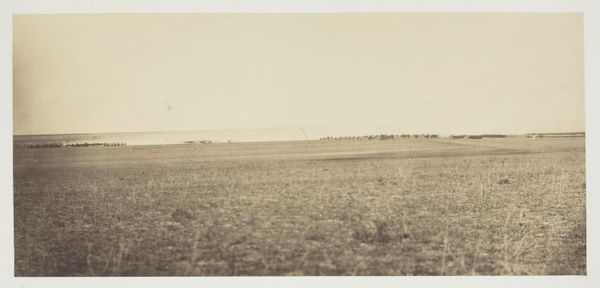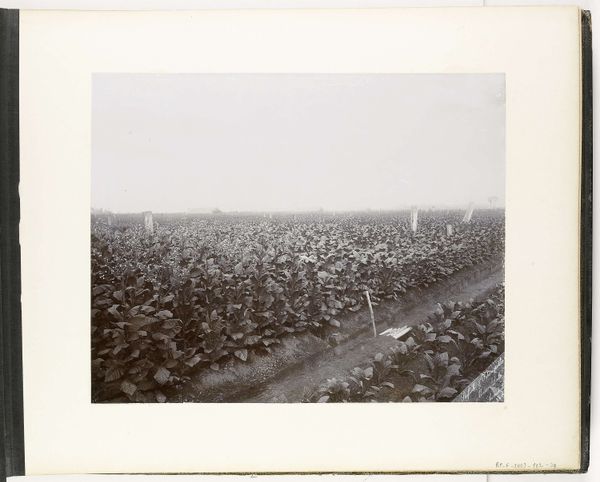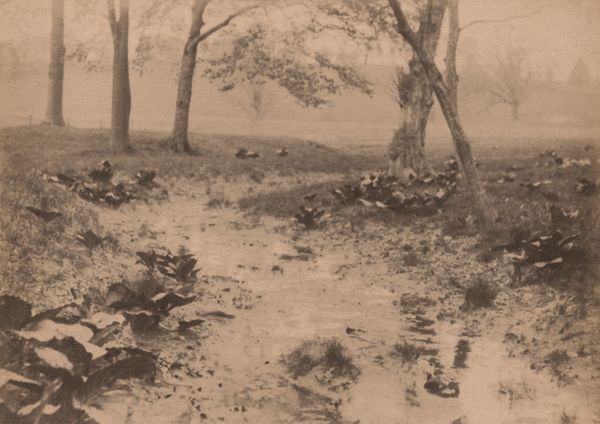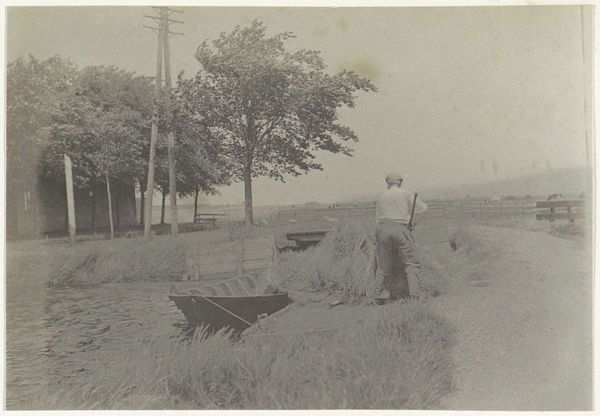
Sparren in de boomkwekerij van de firma K. van Nes & Zonen te Apeldoorn c. 1900 - 1940
0:00
0:00
richardtepe
Rijksmuseum
#
natural shape and form
#
natural tone
#
countryside
#
nature photography
#
nature
#
outdoor photography
#
outdoor scenery
#
nature friendly
#
nature heavy
#
shadow overcast
Dimensions: height 165 mm, width 229 mm
Copyright: Rijks Museum: Open Domain
Curator: This photograph, entitled "Sparren in de boomkwekerij van de firma K. van Nes & Zonen te Apeldoorn," comes to us from Richard Tepe, dating from around 1900 to 1940. Editor: There's an almost uncanny repetition of shapes here. A somewhat unsettling, rhythmic pattern, due to the overwhelming similarity in form of these conifers. Curator: Indeed. Consider the sharp geometries softened by the overcast light. Tepe masterfully uses the frame to segment our field of vision. The receding rows draw the eye deep into the composition, before stopping at the farm buildings. Editor: So this image then, tells a specific tale about Apeldoorn’s economic landscape in the early twentieth century, with nursery cultivation playing a critical, structured role. Were such nurseries typical of that era? Curator: Precisely. Landscape photography, such as this, grew alongside Dutch agricultural and horticultural innovations, displaying both a cultural fascination with natural beauty and advancements in land cultivation and trade. Note the fence creating a defined boundary. What implications could it signal? Editor: That ordered enclosure highlights a shift in the societal gaze, transforming these trees from elements of untouched nature to organized commodities, reflecting changing notions of land usage and management. I wonder, too, about the intended audience of this piece. Was it purely for documentary purposes or did it have a promotional function, highlighting the business' capabilities? Curator: It's certainly food for thought. This composition's careful construction asks that we reconsider its message: celebrating rural commercialism within carefully orchestrated photographic forms. Editor: What a powerful interplay! By examining both its construction and context, the photograph yields insights into historical period and photographic skill, and Tepe’s ability to intertwine nature, labor and economics, leaves us pondering. Curator: Agreed, and understanding this dynamic allows us a far deeper look, wouldn't you say?
Comments
No comments
Be the first to comment and join the conversation on the ultimate creative platform.
